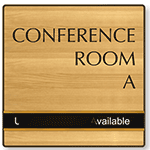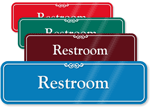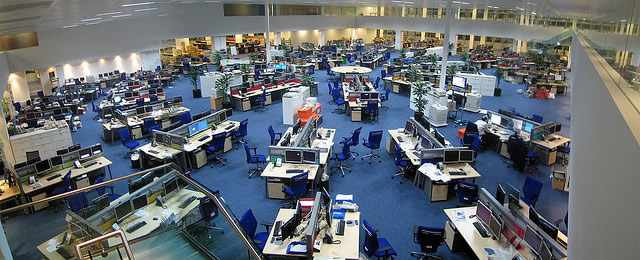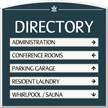Privacy vs. partnership: Tweaking the office open-floor plan
As many cubicle workers can attest, the in-vogue office open-floor plan doesn’t always contribute to productivity. In fact, it can hinder it. While open-floor plans have been popular in interior design over the last decade or so, their efficacy is now being questioned by designers and planners — not to mention, the earplug-wearing workers long disturbed by noisy neighboring cubicles.
As reported by MiBiz, the open-floor plan does help workers collaborate more, and it makes prime use of existing office real estate. Yet productivity may suffer. “People can’t focus,” said Bill Bundy, president of Trendway Corp., told MiBiz. “There’s too many distractions, both audio and visual” in an open-plan office. “It’s not working,” Bundy explained. “There needs to be a balance.”
Furniture companies are addressing critics’ concerns with new products designed to factor privacy into the open-plan equation. At the furniture trade show, NeoCon, in Chicago this May, Haworth Inc. premiered “The Openest Collection,” a selection of furniture offering individuals and worker teams visual privacy. Steelcase, Inc. also debuted a new pro-privacy setting for use within the popular open floor plan.
Designers are developing products to adjust the open-floor plan to incorporate more privacy. “Right now, our industry and businesses are still trying to find that happy medium,” Steffen Lipsky, a principal designer at Haworth, told MiBiz. Previously, many businesses imitated the open-floor plan without considering how their workers interact or company functions. Now, says Lipsky, companies are realizing “the way my company moves isn’t like that company, so I shouldn’t try to copy that.”
Lipsky’s clients have been requesting open office plans with a variety of options to allow for both privacy and partnership among workers. “People don’t work as effectively anymore because they can’t focus,” Lipsky said. “It’s a way-finding process. Usually you experiment and you push and push and push (with a new design), and then you take it too far and you bring it back a little bit,” he explained.
Are open-plans on their way out permanently? Not necessarily. Integrating private spaces into the open-air plan is one solution. As Herman Miller President and CEO Brian Walker explains, “I don’t think you’ll see [open offices] going away [but] I think you’re seeing way more variety in space.” Walker’s own workspace is part of an open area designed for the company’s executive leadership, flanked by private offices. “We have executive private offices. We don’t sit in those all day long, but we have them to go to,” Walker said. “I think those kinds of settings are appropriate for particular types of encounters.”
Furniture company Steelcase offers a new brand, “Susan Cain Quiet Spaces by Steelcase,” with five workspace options, designed for employees to work in privately for part of the day. Chris Congdon, global director of research communications at Steelcase, explained to MiBiz, “The open plan is not the problem. The problem is a lot of organizations have not been thoughtful about giving people the full range of options to choose from. We think it’s about giving people freedom and being able to choose what work setting best suits them.”
Category: New Products, Office courtesy
















